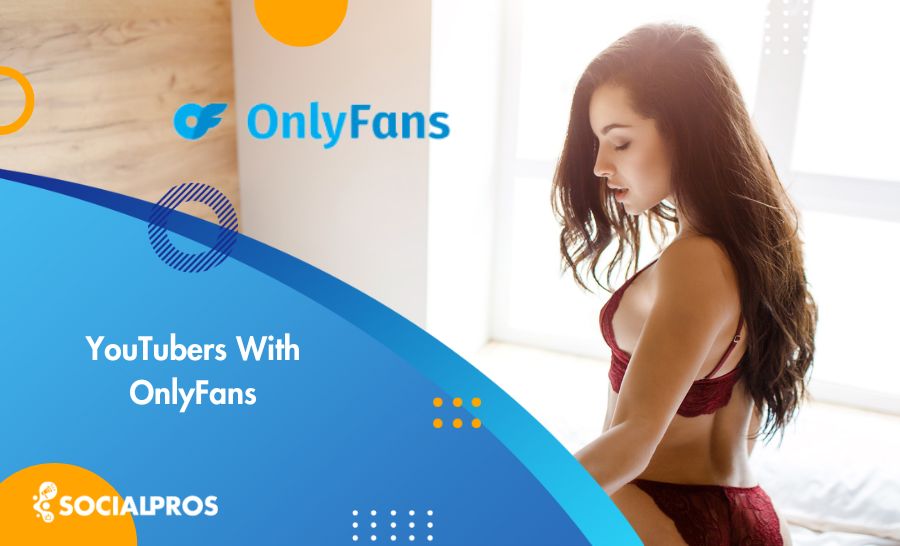Page Contents
On social media, capturing the attention of your target audience can be quite a challenge. With countless brands vying for visibility, it’s essential to find innovative strategies that can help you stand out from the crowd. One such strategy that has gained significant traction is leveraging micro-influencer marketing to ignite niche audiences and achieve social media success.
Micro-influencers are individuals with smaller but highly engaged followings within specific niches. Unlike macro-influencers who boast massive follower counts, micro-influencers have a more intimate connection with their audience, making their recommendations more authentic and trustworthy. This unique characteristic has made them valuable partners for brands seeking to reach niche audiences effectively.
So in this blog post, we will explore the power of micro-influencer marketing and delve into the strategies that can help you leverage their potential.
If you’re eager to discover how micro-influencers can unlock the potential of your social media marketing efforts, keep on reading.
Understanding Who Micro-Influencers Really Are
Micro-influencers have gained significant traction in the world of social media marketing. They have proven to be effective in driving engagement and influencing consumer behavior.
For example, a study conducted by Influencer Marketing Hub found that micro-influencers have 22.2 times more conversations per week about buying recommendations compared to the average consumer.
SO…
It’s safe to say that micro-influencers play a significant role in social media success, but what sets them apart?
Let’s dive into their characteristics, differentiate them from macro-influencers, and explore the benefits they bring to your brand.
Characteristics and Traits of Micro-Influencers
Micro-influencers are like hidden gems within the vast social media landscape. Here are some key characteristics and traits that define them:
1. Niche Expertise: ‘Micro-influencers are known for their deep knowledge and expertise in specific niches.’, shares Faizan Ahmed Khan, Sr. Content Marketing Specialist at UBUY India. Whether it’s fitness, beauty, gaming, or sustainable living, they have cultivated a dedicated following by focusing on a particular area of interest.
This expertise allows them to connect with their audience on a deeper level, establishing trust and credibility.
2. Authenticity and Relatability: Micro-influencers excel at being authentic and relatable. Their content often feels like a conversation with a friend rather than a sponsored advertisement. They share personal stories, experiences, and genuine recommendations, creating a sense of authenticity that resonates with their followers.
3. High Engagement: One of the most significant advantages of micro-influencer marketing is its ability to foster strong engagement with its audience. Jonathon Reilly, Co-Founder of Akkio, also shares an important insight, ‘Since they have a smaller following, they can effectively interact with and respond to comments, messages, and questions.
This level of engagement leads to more meaningful connections and increased trust.’
This report by Markerly proves it:
Differentiating Micro-Influencers from Macro-Influencers
While both micro-influencers and macro-influencers play important roles in social media marketing, there are distinct differences between the two:
1. Follower Count: The most apparent difference lies in their follower counts. Macro-influencers typically have hundreds of thousands or even millions of followers, while micro-influencers have a more modest following ranging from a few thousand to around a hundred thousand. This smaller audience size allows micro-influencers to cultivate more personal connections with their followers.
2. Reach vs. Engagement: Macro-influencers often excel in terms of reach, as their content can reach a vast number of people due to their large follower base. On the other hand, micro-influencers shine when it comes to engagement. Their smaller but highly engaged audience means that their content generates more meaningful interactions, comments, and shares.
3. Cost and Accessibility: Collaborating with macro-influencers can be quite expensive due to their popularity and reach. Micro-influencers, on the other hand, are generally more accessible and cost-effective, making them an attractive option for brands with limited budgets.
Experts Talk about the Benefits of Working with Micro-Influencers
49% of consumers depend on influencer recommendations. This shows that influencer marketing is a powerful way to reach and influence consumers. By working with micro-influencers, brands can tap into the trust and credibility that these influencers have with their followers.
Partnering with micro-influencers offers numerous benefits that can fuel your social media success:
1. Enhanced Authenticity
‘Micro-influencers are masters of authenticity. Their genuine connection with their audience fosters trust and credibility, making their recommendations more influential and impactful.’, shares Warren Phillips, Co-Founder of Lantana Recovery.
2. Niche Audience Targeting
‘Micro-influencers have cultivated followings within specific niches, allowing brands to tap into highly targeted audiences. This targeted approach ensures that your message attracts your target audience who are genuinely interested in your products or services.’, shares Richard Kennedy, Managing Director at Arken Digital.
3. Higher Engagement Rates
‘Micro-influencers’ smaller audience size translates into higher engagement rates. Their followers actively engage with their content, resulting in increased visibility, brand awareness, and potential conversions for your brand.’, shares Abigail Clemente, Chief Editor of Your House Your Garden.
4. Cost-Effectiveness
‘Collaborating with micro-influencers is generally more affordable than working with macro-influencers. This cost-effectiveness enables brands with limited budgets to leverage the power of influencer marketing without breaking the bank.’, shares Alexandra Cotes Daes, Marketing Director at Toronto Flower Co.
Their niche expertise, authenticity, and high engagement rates make them invaluable allies in your social media marketing endeavors. By partnering with micro-influencers, you can effectively reach and connect with your target audience, fueling your brand’s success in the ever-evolving digital landscape.
How to Identify Niche Audiences
Niche audiences play a pivotal role in the success of your micro-influencer marketing efforts. Niche audiences are specific segments of the population who share common characteristics, interests, or preferences.
These audiences are highly targeted and often have a passionate and dedicated following within their respective niches.
Understanding and targeting niche audiences is essential because:
1. Relevance and Alignment: By identifying your niche audience, you can tailor your marketing strategies and content to resonate specifically with those who are most likely to be interested in your brand. This relevance and alignment increase the chances of capturing their attention and driving engagement.
2. Reduced Competition: Niche audiences often have less competition compared to broader, more general audiences. By focusing on a specific niche, you can differentiate yourself from the masses and build your brand as an authority within that particular space.
3. Higher Conversion Rates: Niche audiences tend to have higher conversion potential. When your messaging aligns with their specific interests and needs, they are more likely to engage with your brand, make purchases, and become loyal customers.
How to Conduct Audience Research
To identify and understand your niche audience effectively, conducting thorough audience research and segmentation is crucial. Here’s how you can go about it:
1. Define Your Buyer Persona: Start by creating a detailed profile of your ideal customer or buyer persona. Consider demographic factors such as age, gender, location, and occupation, as well as psychographic aspects like interests, values, lifestyle, and preferences. This persona will serve as a foundation for your audience research.
2. Utilize Social Listening Tools: Use social listening to gather insights about conversations, trends, and discussions happening within your target niche. This data will help you understand the specific interests, challenges, and needs of your niche audience.
3. Engage in Surveys and Interviews: Conduct surveys and interviews with your existing customers or potential target audience. Ask questions that delve into their motivations, pain points, and preferences. This primary research can provide invaluable insights into their mindset and help refine your niche audience understanding.
4. Analyze Social Media Analytics: Dive into the analytics of your social media platforms. Look for patterns, trends, and engagement metrics to identify the posts, topics, or content formats that resonate the most with your target audience. This data can guide your content strategy for reaching niche audiences effectively.
Identifying the Right Niche Audience for Your Brand
Once you have conducted thorough audience research and segmentation, it’s time to identify the right niche audience for your brand. Consider the following factors:
1. Relevance to Your Brand: Look for a niche audience whose interests and values align closely with your brand’s offerings. This alignment ensures that your messaging will resonate genuinely with the audience and increase the chances of meaningful engagement.
2. Size and Reach: Assess the size of the niche audience and evaluate its potential reach. While micro-niche audiences may have smaller numbers, they can provide highly targeted and engaged followers who are more likely to convert. Balance the size and reach of the niche audience with your marketing goals and resources.
3. Competition and Market Saturation: Evaluate the level of competition within the niche audience segment. Determine if the market is oversaturated or if there are opportunities for your brand to stand out and make an impact. Finding a niche audience with less competition can give your brand an advantage.
4. Growth Potential: Consider the growth potential of the niche audience over time. Are there indications of increasing interest or a growing community within that niche? A niche audience with a promising growth trajectory can be valuable for long-term brand success.
Start Collaborating with Micro-Influencers
Finding the right micro-influencers is key to leveraging their influence for social media success. Explore effective methods for identifying suitable influencers, learn how to approach them and establish valuable relationships, and discover strategies for negotiating partnerships and fair compensation.
Finding the Right Micro-Influencers for Your Brand
When it comes to collaborating with micro-influencers, finding the right ones who align with your brand values and target niche audience is essential. Here are some steps to help you find the perfect micro-influencers:
1. Define Your Criteria: Determine the key criteria that align with your brand’s values, niche audience, and campaign objectives. Consider factors such as niche expertise, engagement rates, follower demographics, content quality, and overall brand fit.
2. Research Relevant Social Media Platforms: Identify the social media platforms where your target audience is most active. Explore hashtags, search features, and industry-specific directories to discover micro-influencers who cater to your niche.
3. Analyze Engagement and Authenticity: Look beyond follower counts and examine the engagement rates of potential micro-influencers. Evaluate the quality and authenticity of their interactions, comments, and content. High engagement and genuine connections with their followers indicate an influencer’s potential value for your brand.
4. Utilize Influencer Discovery Tools: Leverage influencer discovery tools that provide insights into influencer performance metrics, audience demographics, and content analysis. These influencer marketing platforms can help you identify micro-influencers who align with your brand’s goals and target niche.
Approaching Micro-Influencers and Establishing Relationships
Once you’ve identified potential micro-influencers, it’s time to approach them and establish meaningful relationships. Consider the following steps:
1. Engage with Their Content: Gerrid Smith, Chief Marketing Officer, Joy Organics, shares, ‘Before reaching out, engage with their content genuinely. Like, comment, and share their posts to demonstrate your interest and support.’ This engagement helps create familiarity and lays the foundation for future collaboration.
2. Personalize Your Outreach: Craft personalized messages when reaching out to micro-influencers. Mention specific aspects of their content that resonate with your brand and explain why you believe a collaboration would be mutually beneficial. Showing genuine interest in their work increases the chances of a positive response.
3. Offer Value: Claire Jill Parker, Director of Business Management at GoVisaFree, says, ‘Clearly communicate the value and benefits of collaborating with your brand. Highlight how the collaboration can benefit their audience and align with their niche expertise.’ Offer unique opportunities, such as exclusive content, giveaways, or access to new products, to entice their interest.
4. Build Relationships: Treat micro-influencers as partners rather than mere marketing channels. Foster relationships by maintaining regular communication, providing support, and showing appreciation for their contributions. Building strong relationships can lead to long-term collaborations and advocacy for your brand.
Negotiating Partnerships and Compensation
When it comes to negotiating partnerships with micro-influencers, it’s essential to establish clear expectations and fair compensation. Consider the following guidelines:
1. Clarify Objectives and Deliverables: Clearly outline your campaign objectives, desired content formats, and key deliverables. Provide detailed guidelines while still allowing room for the influencer’s creativity and personal touch.
2. Tailor Compensation Strategies: Compensation for micro-influencers can vary depending on factors such as follower count, engagement rates, content quality, and campaign scope. Consider offering a combination of monetary compensation, product samples, exclusive experiences, or affiliate programs to ensure a fair and mutually beneficial arrangement.
3. Emphasize Long-Term Relationships: If you envision building long-term partnerships with micro-influencers, consider offering extended collaborations or ambassador programs. This fosters loyalty, consistency, and a deeper connection between the influencer and your brand.
4. Document Agreements: Once negotiations are complete, document the agreed-upon terms in a contract or agreement. Include details such as deliverables, timelines, compensation, usage rights, and FTC compliance guidelines to ensure transparency and avoid misunderstandings.
Best Practices for Micro-Influencer Marketing
Implementing best practices ensures effective micro-influencer marketing. Establish clear communication and guidelines, strike the right balance between creative freedom and brand alignment, and build long-term relationships with micro-influencers.
Let’s explore these best practices to maximize the impact of your micro-influencer partnerships.
Establishing Clear Communication and Guidelines
Clear communication and guidelines are vital for successful micro-influencer marketing campaigns. By providing clear instructions and expectations, you can ensure smooth collaboration and align the influencer’s content with your brand’s vision. Consider the following best practices:
1. Detailed Briefing: Provide a comprehensive campaign brief that outlines your goals, target audience, key messages, and any specific requirements. Include guidelines on content format, style, tone, and brand guidelines to maintain consistency.
2. Open Channels of Communication: Establish open lines of communication with micro-influencers to address any questions, concerns, or clarifications they may have. Encourage regular updates and provide prompt feedback to foster a collaborative environment.
3. Clear Deadlines: Set clear deadlines for content submission, revisions, and campaign deliverables. This allows for proper planning and ensures the timely execution of the campaign.
4. FTC Compliance: Educate micro-influencers about FTC guidelines and ensure their compliance with disclosure requirements. Transparently communicating sponsored content builds trust with the audience and maintains ethical practices.
Balancing Creative Freedom and Brand Alignment
Finding the right balance between granting creative freedom to micro-influencers while maintaining brand alignment is crucial. It allows influencers to showcase their authentic voice while ensuring that the content aligns with your brand’s values. Consider the following best practices:
1. Collaborative Content Creation: Encourage a collaborative approach to content creation. Share your brand’s story, values, and key messaging points, and allow micro-influencers to infuse their unique creativity and perspective. This balance fosters engaging content that resonates with both the influencer’s audience and your brand.
2. Content Approval Process: Implement a content approval process that allows you to review and provide feedback on the proposed content before it goes live. Maintain open and constructive communication during this process, offering suggestions and guidance to align the content with your brand’s identity.
3. Authenticity and Genuine Recommendations: Emphasize the importance of authentic storytelling and genuine recommendations. Encourage micro-influencers to share personal experiences and insights related to your brand. This approach maintains credibility and connects with the audience on a deeper level.
4. Flexibility in Interpretation: Give micro-influencers some flexibility in interpreting the campaign brief and guidelines. Trust their expertise and allow them to adapt the content to their audience’s preferences and communication style. This flexibility encourages creativity and ensures a natural fit with their existing content.
Building Long-Term Relationships with Micro-Influencers
Building long-term relationships with micro-influencers is beneficial for sustained success in influencer marketing. Establishing trust, fostering loyalty, and nurturing relationships can lead to ongoing collaborations and stronger brand advocacy. Consider the following best practices:
1. Appreciation and Recognition: Show genuine appreciation for the micro-influencers contribution to your campaigns. Recognize their efforts publicly, share their content and express gratitude for their support. This fosters a sense of value and encourages future collaborations.
2. Exclusive Opportunities: Offer exclusive opportunities to micro-influencers to strengthen the partnership. Provide early access to product launches, involve them in product development, or invite them to exclusive events or brand experiences. These opportunities create a sense of exclusivity and enhance their loyalty.
3. Long-Term Collaboration Agreements: Consider formalizing long-term collaboration agreements or ambassador programs with micro-influencers who consistently align with your brand and deliver exceptional results. These agreements outline expectations, compensation, and mutual benefits, solidifying the partnership.
4. Engage Beyond Campaigns: Stay engaged with micro-influencers even when there are no ongoing campaigns. Interact with their content, share their updates, and maintain regular communication. Building genuine connections beyond campaign collaborations strengthens the relationship and fosters ongoing support for your brand.
Conclusion
Micro-influencers offer a powerful avenue for igniting niche audiences and achieving social media success. By understanding their characteristics, differentiating them from macro-influencers, and recognizing the benefits they bring, you can effectively leverage their influence.
Identifying niche audiences allows for targeted marketing efforts, and conducting thorough audience research helps in finding the right audience for your brand. Once you’ve identified the ideal micro-influencers, approaching them, establishing relationships, and negotiating partnerships become critical steps for successful collaborations.
Crafting tailored content strategies, setting clear goals, and measuring the success of micro-influencer campaigns ensure impactful results. Best practices such as clear communication, balancing creative freedom and brand alignment, and building long-term relationships contribute to effective micro-influencer marketing.
By incorporating these practices into your social media strategy, you can tap into the power of micro-influencers and create meaningful connections with your target audience. So, go ahead, ignite those niche audiences, and watch your social media success soar.






